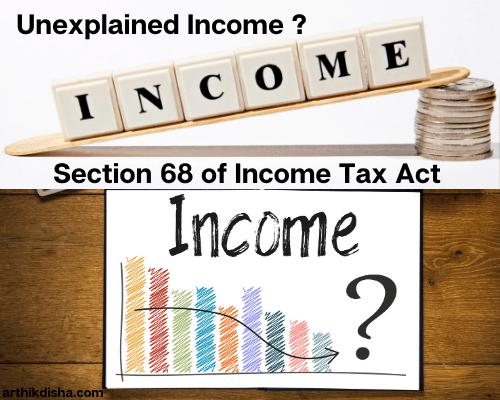Understanding the Taxation of Unexplained Income or Investment
- CA. Ali Asgar
·
3/27/2024

Unexplained income or investment poses significant challenges in the realm of taxation, often necessitating stringent provisions to ensure compliance and fairness. In India, the Income Tax Act delineates specific sections to address such instances and levy taxes accordingly. This comprehensive guide delves into the key aspects of the taxation of unexplained income or investment, shedding light on the provisions, implications, tax rates, and burden of proof associated with it.
Section 68: Cash Credits Section 68 of the Income Tax Act pertains to cash credits found in the books of an assessee without adequate explanation regarding their nature and source. If the explanation provided by the assessee is deemed unsatisfactory by the Assessing Officer, the sum credited may be charged to income tax as the assessee's income for the respective previous year.
Section 69: Unexplained Investments Section 69 deals with unexplained investments made by the assessee in the preceding financial year, which are not recorded in the books of account. Failure to provide a satisfactory explanation regarding the nature and source of such investments may lead to deeming the value of the investments as the assessee's income for that financial year.
Section 69A: Unexplained Money, Bullion, or Valuable Articles Under Section 69A, if the assessee is found to be in possession of money, bullion, jewelry, or other valuable articles not recorded in the books of account, and no satisfactory explanation is furnished regarding their acquisition, such assets may be deemed as the assessee's income for the respective financial year.
Section 115BBE: Rates of Tax Section 115BBE prescribes the tax rates applicable to incomes referred to in Sections 68, 69, 69A, 69B, 69C, and 69D. Income deemed unexplained under these sections is taxed at a flat rate of 60%, without allowing any deductions or allowances. Additionally, a surcharge of 25% and cess are applicable, resulting in an effective tax rate of 77.25%.
Judicial Interpretations and Burden of Proof The burden of proof lies with the assessee to satisfactorily explain the nature and source of unexplained income or investment. Judicial precedents, including rulings by the Supreme Court, reinforce this principle, emphasizing the responsibility of the assessee to justify the origin of any received sum or asset.
In conclusion, understanding the provisions of Sections 68, 69, 69A, and 115BBE is essential for taxpayers to navigate the complexities of taxation related to unexplained income or investment. Compliance with these provisions not only ensures adherence to legal requirements but also fosters transparency and accountability in the tax regime.

© 2025 Capikar Technologies. All rights reserved